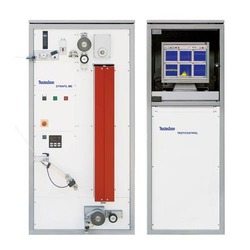Difference between revisions of "Thermal Analyzers"
| Line 1: | Line 1: | ||
[[Category:Analyzing]]{{Knoppen}} | [[Category:Analyzing]]{{Knoppen}} | ||
[[File:Thermal analyzers.jpg|thumb|right|Thermal Analyzers]] | |||
'''Thermal Analyzers''', or calorimetry, correlates temperature-dependent events to physical characteristics of a sample, such as mass, structure, strength, brittleness, elongation, decomposition, evolved gases, oxidation, reduction, or physicochemical structure. Any property that changes with temperature lends itself to some variant of thermal analyzers. | |||
Every industry concerned with the relationship between energy and how their products behave in the real world uses thermal analyzers. Thermal measurements provide food companies with values for caloric content, materials manufacturers with phase transition temperatures, and academic researchers with insights into phases of matter. | |||
Thermal analysis is not only about high temperatures. Some instruments have a cooling function that enables monitoring of low-temperature events such as glass transition in polymers. | Thermal analysis is not only about high temperatures. Some instruments have a cooling function that enables monitoring of low-temperature events such as glass transition in polymers. | ||
Latest revision as of 09:58, 29 January 2013
Thermal Analyzers, or calorimetry, correlates temperature-dependent events to physical characteristics of a sample, such as mass, structure, strength, brittleness, elongation, decomposition, evolved gases, oxidation, reduction, or physicochemical structure. Any property that changes with temperature lends itself to some variant of thermal analyzers.
Every industry concerned with the relationship between energy and how their products behave in the real world uses thermal analyzers. Thermal measurements provide food companies with values for caloric content, materials manufacturers with phase transition temperatures, and academic researchers with insights into phases of matter.
Thermal analysis is not only about high temperatures. Some instruments have a cooling function that enables monitoring of low-temperature events such as glass transition in polymers.
